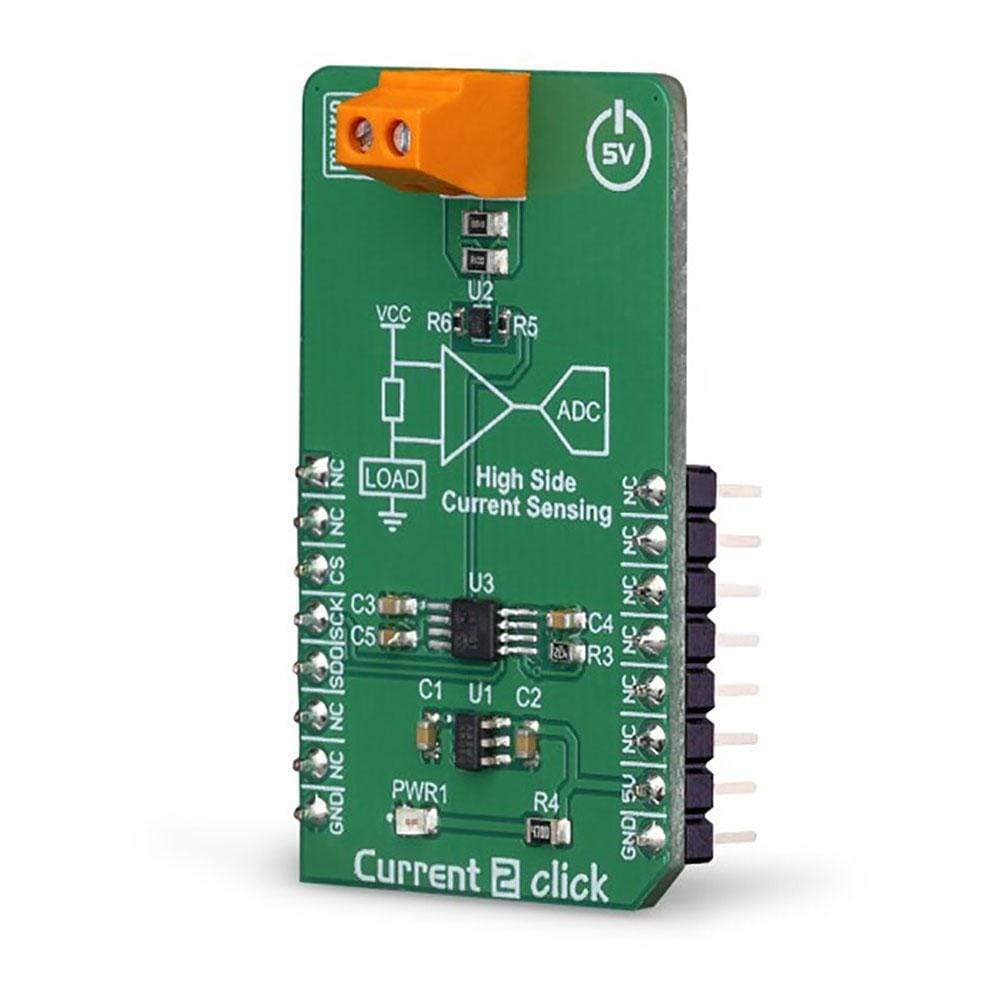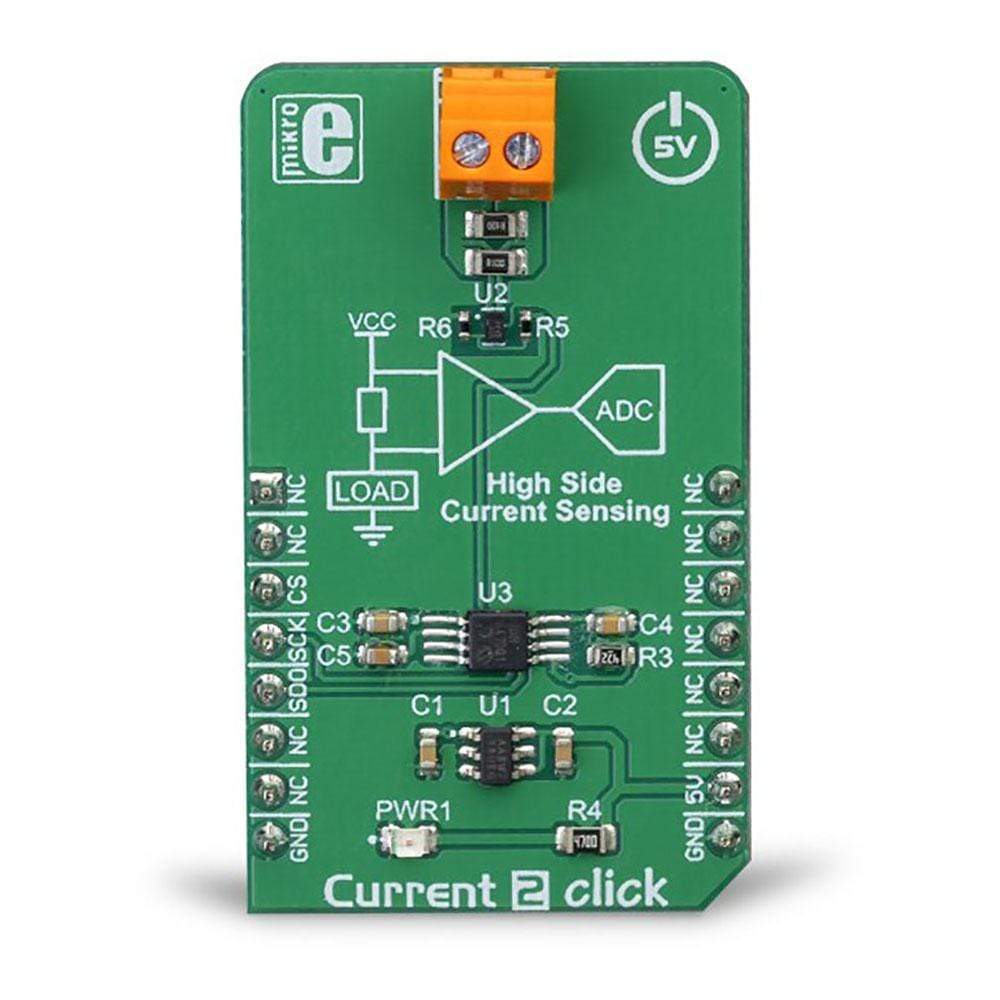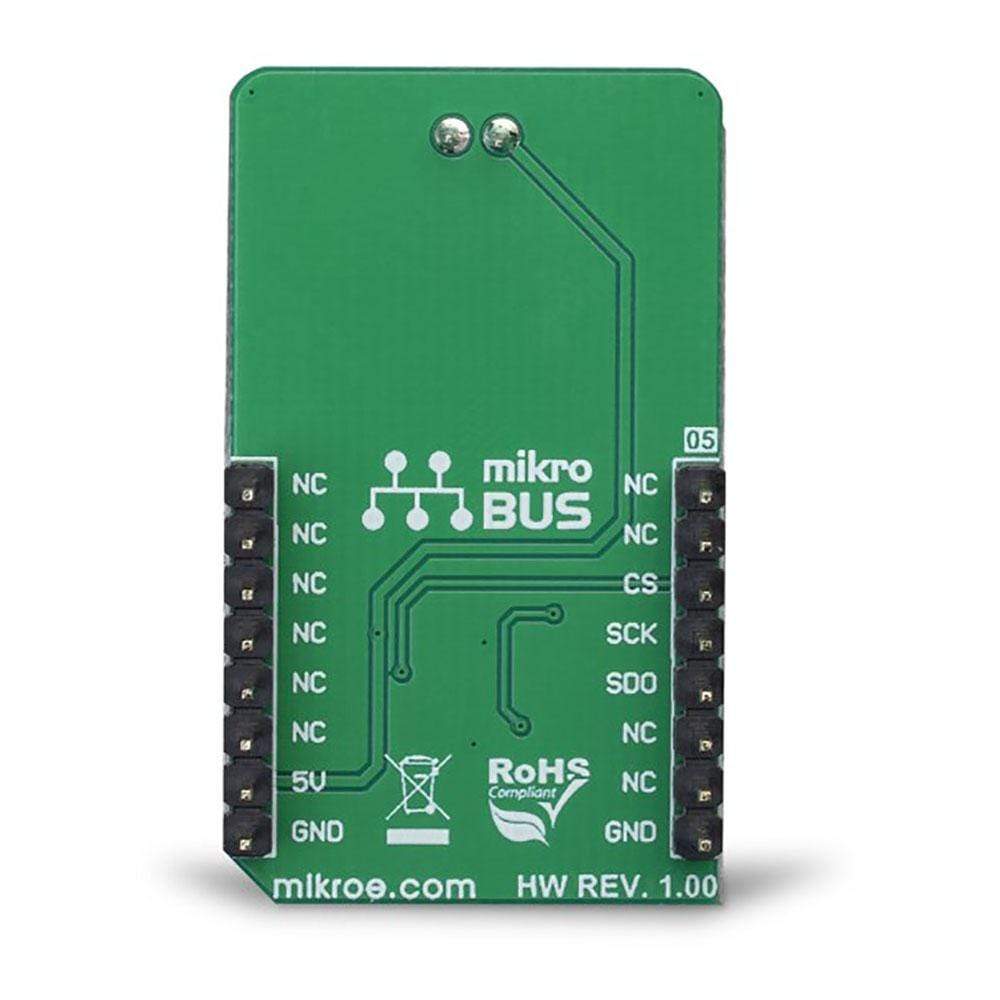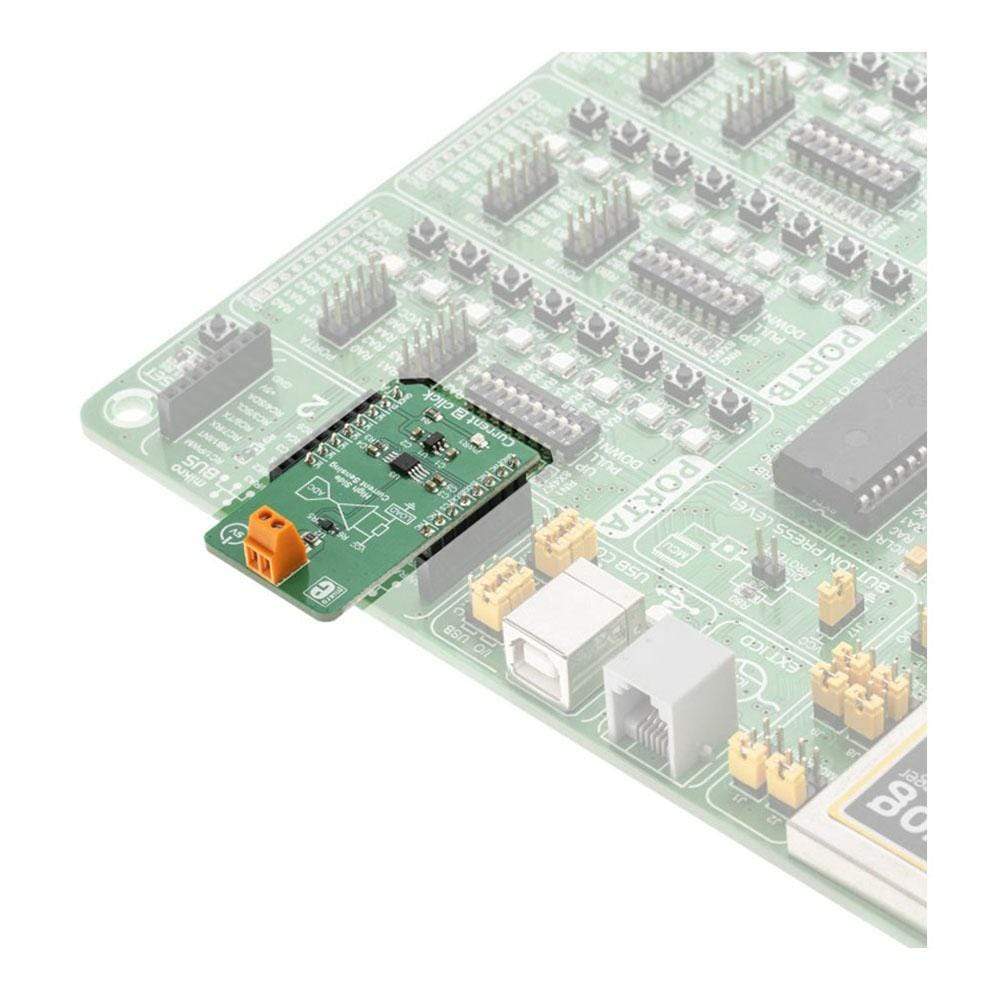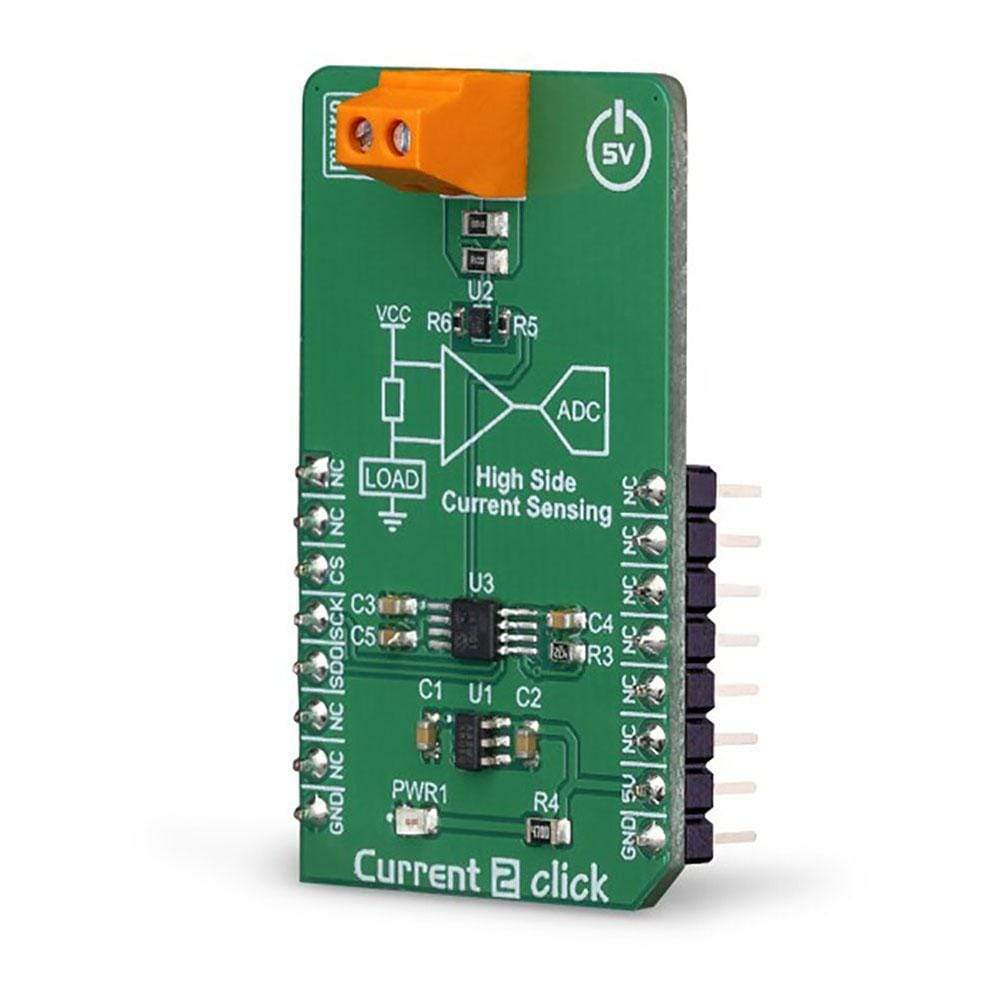
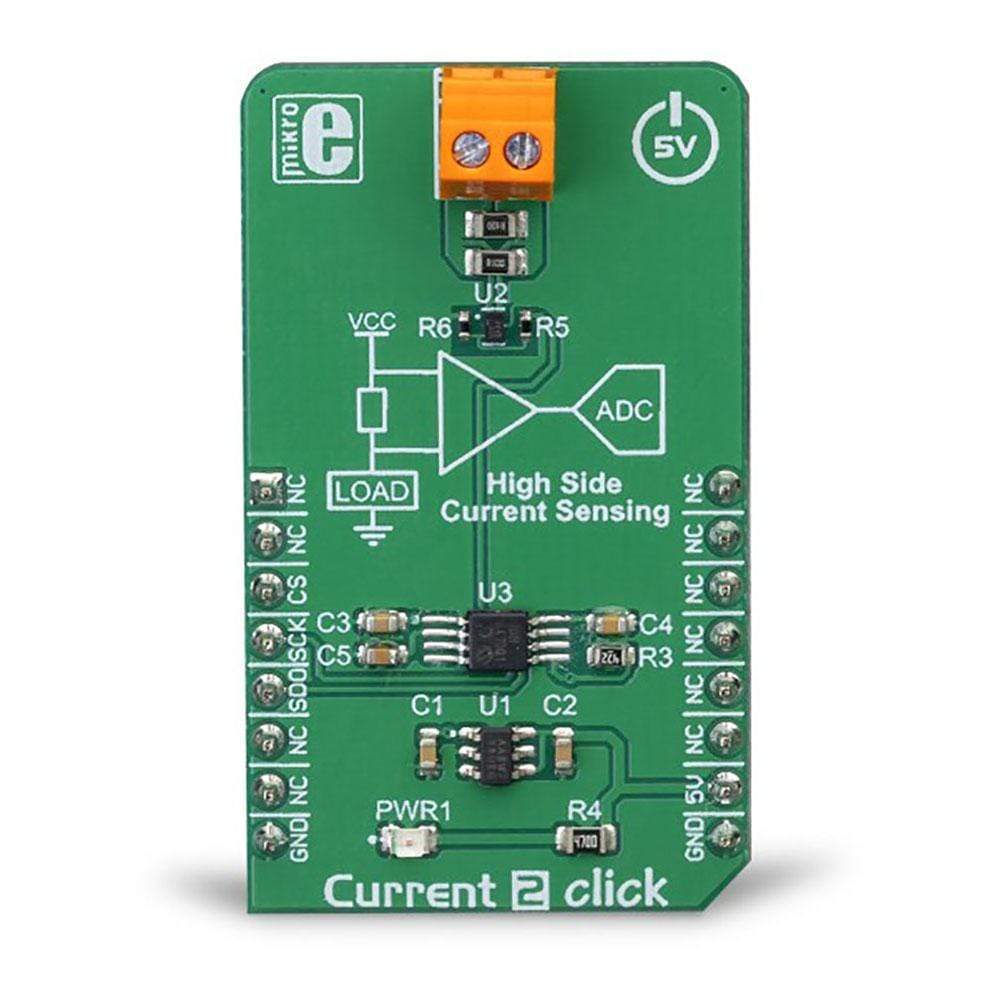
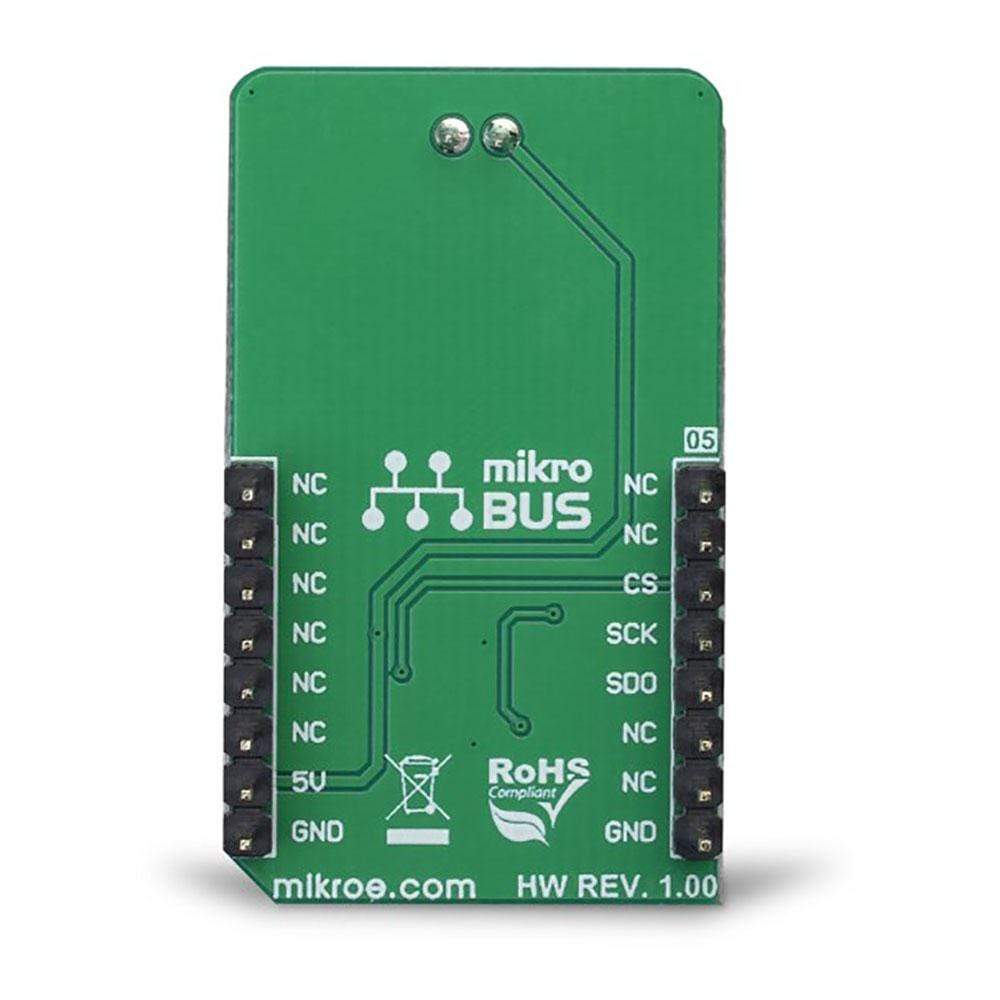
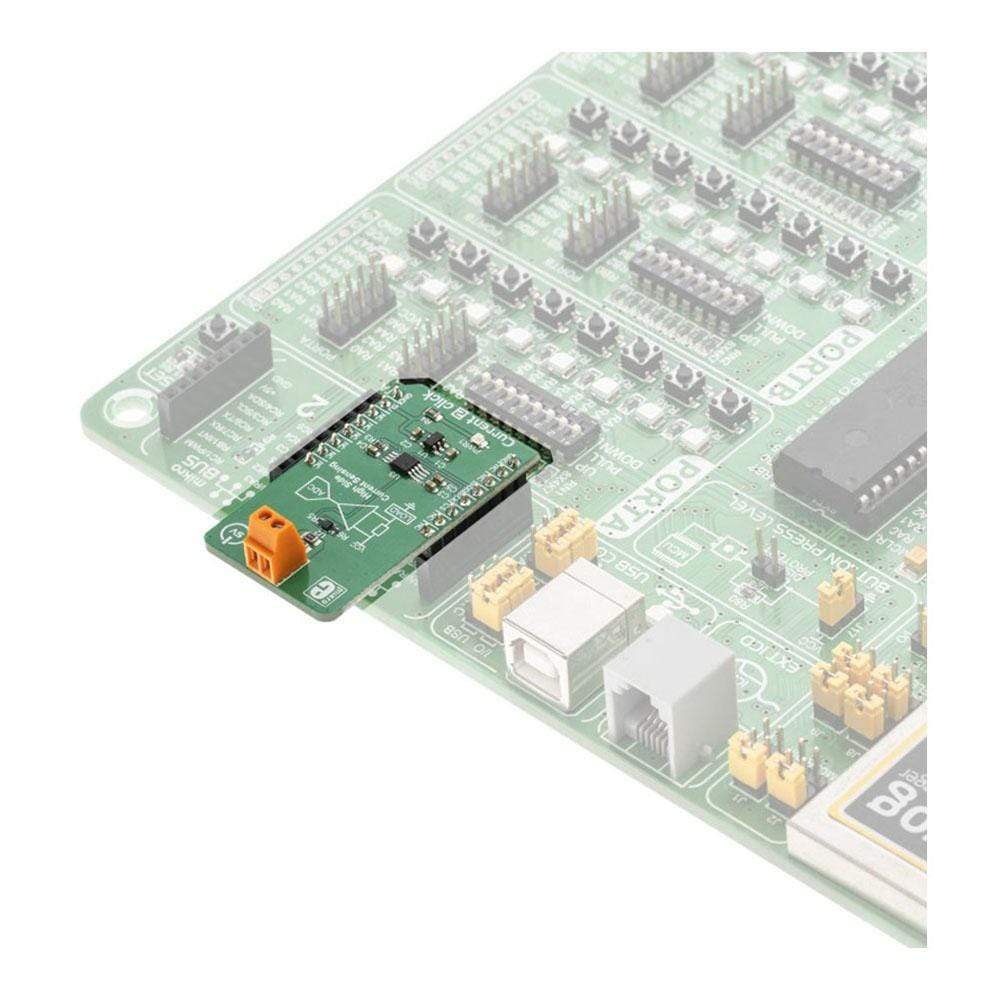
Overview
The Current 2 Click Board™ is an accurate current sensing Click Board™ suitable for very accurate measurement of the current through the load. It utilizes the high-side current sensing approach, which has a few advantages over the low-side current sensing. Current 2 Click Board™ is equipped with an integrated transimpedance amplifying circuit, designed specifically for low-power current sensing applications.
Designed to be used with a common-mode voltage of up to 6V, this Click Board™ is a perfect solution for battery charging monitoring, various battery gauges, and other similar low voltage applications that require simple and reliable current monitoring.
Downloads
The Current 2 Click Board™ features a very low error margin of less than 0.2%, a very low offset and quiescent current, allowing the voltage across the sense resistor as high as 2.5V. The output current is converted to voltage and fed to the 10-bit A/D converter, which uses a voltage reference IC, for improved accuracy. Thanks to the external sense resistor, the Current 2 Click Board™ is able to provide readings for quite a large current through the connected load. Due to the high-side sensing configuration, the Current 2 Click Board™ does not disturb the GND potential of the connected load and allows the detection of the short-circuit condition at the input. The A/D converter allows reading the measured current via the SPI interface.
How Does The Current 2 Click Board™ Work?
The Current 2 Click Board™ is based on the FAN4010, a high-side current sensor by ON Semiconductor (formerly Fairchild). This integrated circuit is a transimpedance amplifier suitable for the current sensing through the shunt resistor on the high side, between the power supply and the connected load. This allows the short circuit on the load to be sensed and will not disturb the GND reference of the connected load since the shunt resistor between the load negative connection terminal and the GND is avoided. These advantages are especially useful for battery charging applications and battery gauges since the short circuit detection is very important in such applications. Also, the negative terminal of the battery has to stay on the same potential as the GND for the temperature output to be accurate, which is impossible with the low-side shunt resistor.
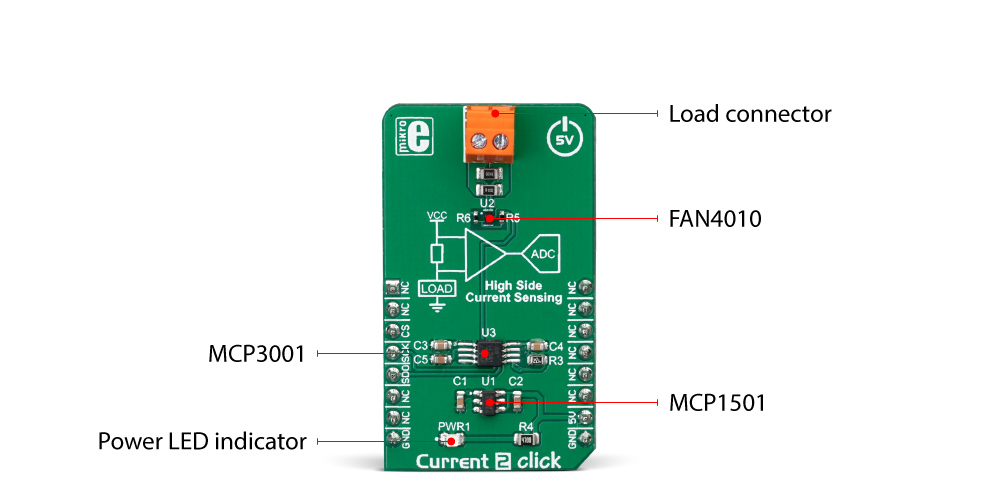
The similar schematic could be designed using only operational amplifiers, however due to a high inaccuracy of such design (as the offset voltage of a typical operational amplifier can greatly affect the output current, especially after the amplification is applied), and the low common mode voltage that typical operational amplifier can withstand, specialized current sensing amplifier ICs (CSA) such as the FAN4010, are used instead.
The FAN4010 features an extremely low current offset of only 2 µA, which allows very accurate measurement within the 0.2% margin. The transconductance ratio at the output of the FAN4010 is 10 mA/V, where V represents the voltage across the shunt resistor. The current at the output linearly depends on the current through the load. By using the appropriate resistor between the output and the GND, this current can be scaled to an appropriate voltage level that can be used as the input for the A/D converter.
The MCP3001, a 10-bit A/D converter (ADC) with SPI interface, from Microchip. It is a high-performance, low-noise single-supply ADC, which can deliver up to 200,000 samples per second (200 ksps). This makes it well suited for fast monitoring applications. It is also equipped with the reference input pin, allowing it to use an accurate voltage reference, which ensures very high sampling accuracy. Combined with the MCP1501-20 IC, a high-precision, buffered voltage reference of 2.048V, it is used with enough headroom to sample load current up to 4 A (4 A = 2 V at the ADC input).
The calculation formulas can derived from the datasheet of the FAN4010. However, it is not necessary to perform any calculations if using mikroSDK compatible functions, provided for this Click board™. These functions already contain all the necessary calculations and output the current through the connected load directly in physical units [mA]. The included example demonstrates their practical usage.
SPECIFICATIONS
| Type | Measurements |
| Applications | The Current 2 Click Board™ is a perfect solution for the battery charging monitoring, various battery gauges, and other similar low voltage applications that require simple and reliable current monitoring. |
| On-board modules | FAN4010, a high-side current sensor by ON Semiconductor (formerly Fairchild); MCP3001, a 10-bit A/D converter (ADC) with SPI interface; MCP1501-20 IC, a high-precision, buffered voltage reference of 2.048V, both from Microchip. |
| Key Features | A very low series resistance, high-side sensing approach with no shunt resistor that disturbs the GND reference, highly accurate 10-bit A/D converter, combined with the precise voltage reference source.e |
| Interface | SPI |
| Compatibility | mikroBUS |
| Click board size | M (42.9 x 25.4 mm) |
| Input Voltage | 5V |
PINOUT DIAGRAM
This table shows how the pinout of the Current 2 Click Board™ corresponds to the pinout on the mikroBUS™ socket (the latter shown in the two middle columns).
| Notes | Pin |  |
Pin | Notes | |||
|---|---|---|---|---|---|---|---|
| NC | 1 | AN | PWM | 16 | NC | ||
| NC | 2 | RST | INT | 15 | NC | ||
| NC | 3 | CS | RX | 14 | NC | ||
| SPI Chip Select | CS | 4 | SCK | TX | 13 | NC | |
| SPI Data OUT | SDO | 5 | MISO | SCL | 12 | NC | |
| SPI Data IN | SDI | 6 | MOSI | SDA | 11 | NC | |
| NC | 7 | 3.3V | 5V | 10 | 5V | Power Supply | |
| Ground | GND | 8 | GND | GND | 9 | GND | Ground |
ONBOARD SETTINGS AND INDICATORS
| Label | Name | Default | Description |
|---|---|---|---|
| LD1 | PWR | - | Power LED indicator |
| TB1 | - | - | Load connector |
| General Information | |
|---|---|
Part Number (SKU) |
MIKROE-3292
|
Manufacturer |
|
| Physical and Mechanical | |
Weight |
0.023 kg
|
| Other | |
Country of Origin |
|
HS Code Customs Tariff code
|
|
EAN |
8606018714094
|
Warranty |
|
Frequently Asked Questions
Have a Question?
Be the first to ask a question about this.

